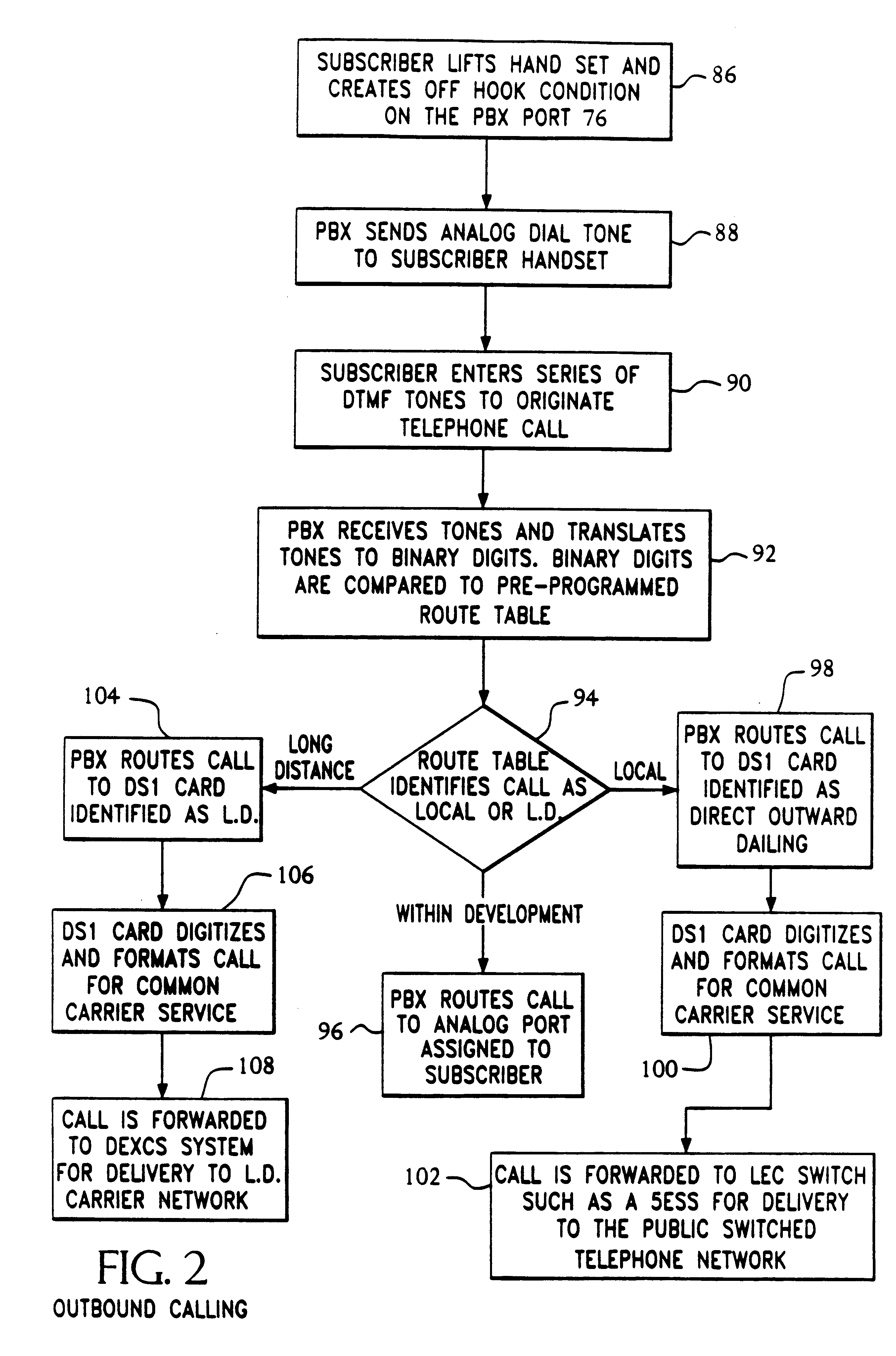Since the RBOCs had not been required to freely allow competition for local telephone service in the local markets, to date no company has been successful in entering the estimated $100 billion Local Exchange Carrier ("LEC") market in the United States on a large scale, large scale being defined as including residential customers.
1. There is currently no viable, cost effective alternative to the conventional "hardwire" platform to allow large scale competition in the LEC market on a national basis or even on a regional basis.
2. The costs to build a new infrastructure today are prohibitive. In a Wall Street Journal article dated Feb. 12, 1996, the costs of building such an infrastructure were projected at $5 billion to "get started" and $20 billion to "extensively penetrate the market." It has since become clear to the entire
telecommunications industry that these projected costs were very low. In 1996, both AT&T and MCI announced strategic plans calling for large scale (including residential customers) building of local networks to compete with the Incumbent LECs. However, neither AT&T nor MCI has pursued these plans and both have admitted publicly that doing so, on a large scale, would not be economically feasible. On Jul. 14, 1997, the Wall Street Journal reported MCI's projected loss of $800 million in its attempt to build local networks in a number of metropolitan markets to begin to compete for local commercial accounts. This news caused MCI to lose $5 billion of market value in one day! Similarly, AT&T spent $4 billion on its efforts but reaped only $65 million in revenue in its unsuccessful attempt to enter the LEC market for residential services.
3. The RBOCs have enjoyed one of the highest operating cash flow margins of any U.S. industry, over double that of the IXCs. While the LEC business has remained "proprietary," the long distance business, with its increased competition, has become much more of a "commodity" business. AT&T has had its market share drop to 50% since 1984 and has had its average revenue per minute
cut almost in half. Hence, AT&T and MCI are not in a position to "outspend" the RBOCs in infrastructure development.
4. The RBOCs have all filed to become long distance service providers ("IXCs"). In contrast to the plight of AT&T and MCI in their attempts to enter the LEC market, there are no costly infrastructure obstacles blocking entry of the RBOCs into the IXC market: the RBOCs can buy ready made networks from IXC providers at wholesale rates for immediate deployment. The RBOCs initially announced that their initial strategies regarding the provision of long distance services would be to resell, where discounts usually run about 80%. However, in contrast, the resale discounts the RBOCs originally intended to offer the IXCs for resale of local services were closer to 10-15%.
However, to date no technology has been proposed which would enable a company independent of the RBOCs to provide local telephone services at a competitive cost.
None of the solutions requiring infrastructure investment is economically viable for the reasons noted above.
Currently, the access charges paid to LECs by the IXCs for the use of carrier
common line service vary by LEC but can constitute upwards of 40% of the overall cost of the call.
Payment of such access charges remains a key issue in the
telecommunications industry since the passage of the
Telecommunications Act of 1996 and is one of the primary obstacles to enhanced competition between the LECs and other potential entrants into the local telecommunications marketplace.
However, to date, such systems have not been implemented in the residential marketplace because of the prohibitive deployment costs and lack of a technology solution that would reduce these costs.
"Project Angel," in particular, has yet to be implemented, and it has been reported that unless deployment costs are brought down significantly from where they are today to make Project Angel an economically viable local service option, it will not be implemented.
Such changes in strategy have become necessary because the deployment costs of alternative technologies such as fixed
wireless local loop systems simply have been found to be too great to build a competitive infrastructure to compete against the established Incumbent LECs for the telephone services of suburban and rural customers.
The plunging costs of
cellular telephone services have compounded the problem facing those considering building infrastructure to implement fixed
wireless local loop telephone services.
In fact, IXCs AT&T and Sprint have aggressively attempted to move customers to their own digital wireless (cellular or PCS) services because the deployment costs for Project Angel and other fixed
wireless local loop systems have made fixed
wireless systems a less desirable alternative.
Indeed, if the deployment costs for fixed
wireless local loop systems cannot be brought down, IXCs such as AT&T have indicated that they will likely have to drop their plans for fixed wireless local loop systems.
In effect, the only significant additional infrastructure cost would be the addition of a wireless
base station at the Independent Central Office and the addition of a radio
tower and antenna
system.
 Login to View More
Login to View More  Login to View More
Login to View More 


